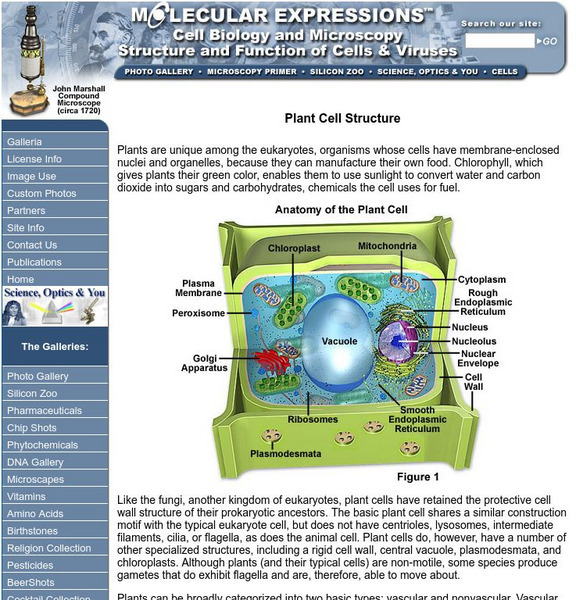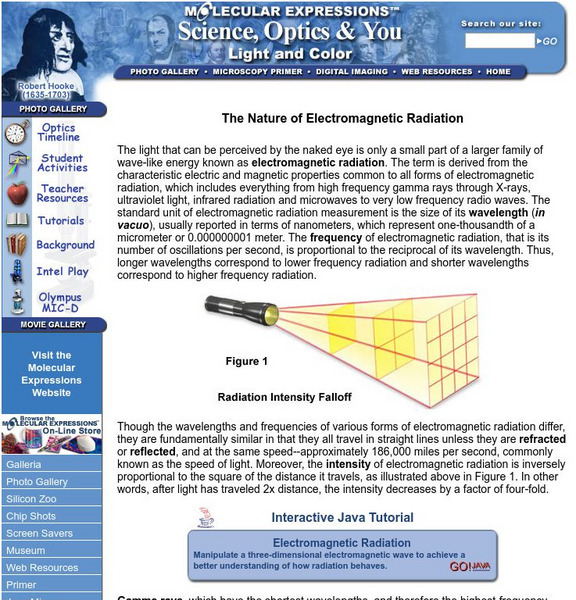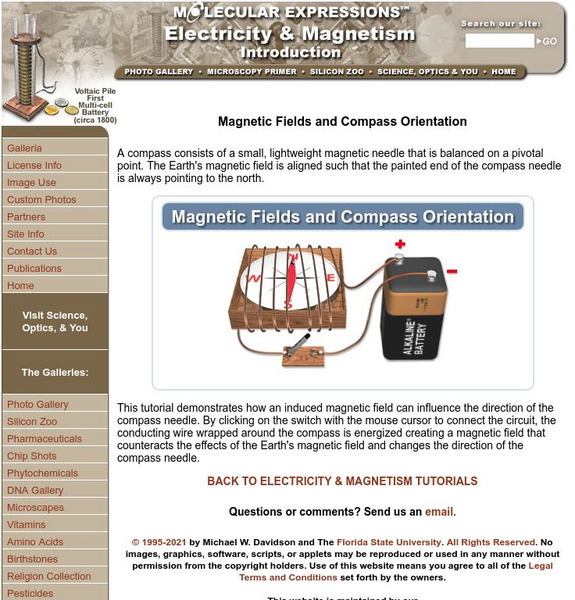Florida State University
Florida State University: Magnet Lab: Timeline of Electricity and Magnetism: 1750 1774
With his famous kite experiment and other forays into science, Benjamin Franklin advances knowledge of electricity, inspiring his English friend Joseph Priestley to do the same.
Florida State University
Florida State University: Magnet Lab: Magnetic Thin Films
This gallery takes readers from the 1880s and the pioneering work of German physicist August Kundt, up to recent advances in technology, including interlayer exchange coupling (IEC) and giant magnetoresistance (GMR).
Florida State University
Florida State University: Magnet Lab: Metallic Superlattices
A look at superlattices (alternating layers of thin films deposited in an orderly manner), methods for forming them, and their applications.
Florida State University
Florida State University: Magnet Lab: Organic Superconductors
Organic superconductors, though still new to science, are lighter and more potentially versatile than inorganic superconductors and may have important applications in the future.
Florida State University
Florida State University: Magnet Lab: Lanthanum Aluminate
An explanation of this unique ceramic, including why it is of such great interest to scientists. Researchers use lanthanum aluminate to grow thin films of superconducting materials (including buckyballs) and hope it can one day be used...
Florida State University
Florida State University: Magnet Lab: Faraday Cage
A faraday cage is an important tool for some scientists at the MagLab. But they don't work with it: they work inside it.
Florida State University
Florida State University: Magnet Lab: Dilution Refrigerators
Dilution fridges owe their cooling power to the incredible element helium. This animation illustrates how dil fridges exploit the element's properties to make things very, very cold.
Florida State University
Florida State University: Magnet Lab: Atmospheric Pressure Photoionization (Appi)
In the APPI technique, UV light photons are used to ionize sample molecules.
Florida State University
Florida State University: Magnet Lab: What Is a Dewar?
What are those big, silver containers that scientists push down the Magnet lab hallways? Find out what these devices are in this short article.
Florida State University
Florida State University: Magnet Lab: What Is a Bus Room?
The MagLab's bus tunnel has an aluminum track, but it doesn't carry passengers: it carries electricity, up to 56 megawatts of it.
Florida State University
Florida State University: Molecular Expressions: Measuring With Shadows
You can use shadows and a meter stick to measure very tall objects from the ground--and before you try this experiment yourself, see how it works with a Java applet that measures the height of a Tyrannosaurus Rex.
Florida State University
Florida State University: Plant Cell Structure
This site features a clear picture of the plant cell with a concise explanation of its key parts and their functions.
Florida State University
Florida State University: Basic Electromagnetic Wave Properties
This Florida State University page includes an interactive java tutorial that explores the relationship between frequency, wavelength, and energy, and enables the visitor to adjust the intensity of the radiation and to set the wave into...
Florida State University
Florida State University: Nature of Electromagnetic Radiation
This site from The Florida State University provides an informational page on electromagnetic radiation discusses the characteristics and properties of its many forms including X-rays, gamma rays, ultraviolet radiation, infrared...
Florida State University
Florida State University: Molecular Expressions: Electromagnetic Radiation
This Florida State University page introduces light as an electromagnetic wave and discusses the frequency and wavelength range of the various regions of the electromagnetic spectrum. Includes links to some interactive Java applets.
Florida State University
Florida State University: Molecular Expressions: Magnetic Fields and Compass Orientation
Simulate the creation of an induced magnetic field through the use of a simple electric circuit. An interactive demonstration is included.
Florida State University
Florida State University: Magnet Lab: Clean, Keen, Machining Team
The MagLab has its own machine shop, complete with an experienced, talented staff. These craftsmen collaborate closely with renowned scientists to create one-of-a-kind magnet parts that make possible experiments done nowhere else in the...
Florida State University
Florida State University: The Leeuwenhoek Microscope
Microscope pioneer and amateur scientist Leeuwenhoek built a number of tiny microscopes with a variety of lenses.
Florida State University
Florida State University: Science, Optics & You: Willebrord Snell
Biography of Willebrord Snell (1580-1626), a Dutch mathematician known best for his work in refractive indices.
Florida State University
Florida State University: Science, Optics & You: E Tienne Louis Malus
Biography of Etienne-Louis Malus (1775-1812), a famous French mathematician and physicist, best known for his work in double refraction and in polarization.
Florida State University
Florida State University: Science, Optics & You: Leonhard Euler
Biography of Leonhard Euler (1707-1783), a famous Swiss mathematician also known for his work in optics and astronomy who left behind him a huge body of academic works.
Florida State University
Florida State University: Science, Optics & You: Anders Jons Angstrom
Biography of Anders Jonas Angstrom (1814-1874), a Swedish physicist who pioneered the field of spectroscopy. He was also well known for his work in mathematics and astronomy.
Florida State University
Florida State University: Molecular Expressions: Making Crystals
Students will work in groups to grow crystals in different conditions, and then make conclusions about how and why crystals form. A detailed procedure and materials list, follow-up questions, and a teacher's guide that contains extension...
Florida State University
Florida State University: Molecular Expressions: Mitosis
Learn about the process of mitosis, or the mechanism that allows the nuclei of cells to split and provide each daughter cell with a complete set of chromosomes during cellular division. A link to a mitosis interactive Java tutorial is...












